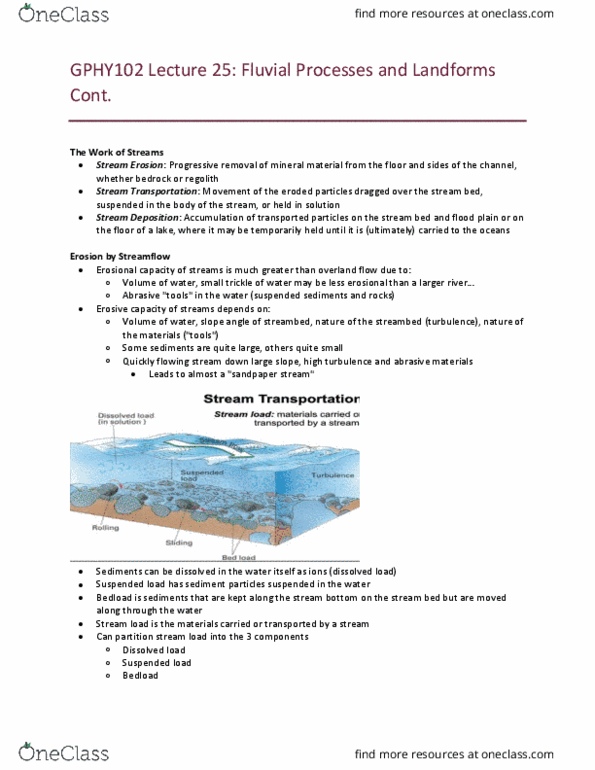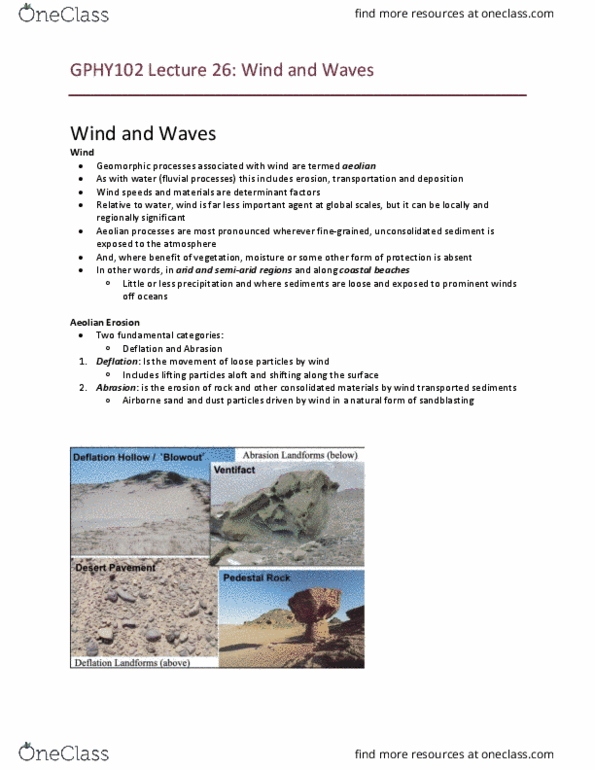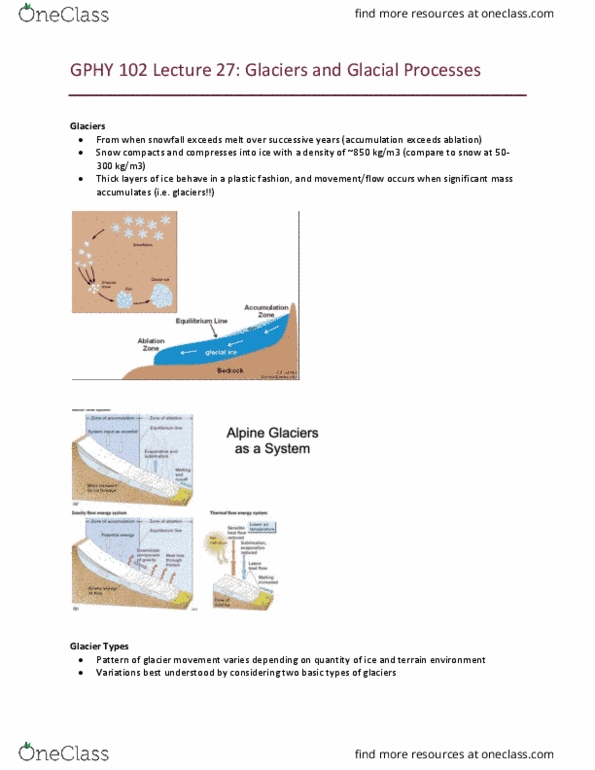GPHY 102 Lecture Notes - Lecture 26: Aeolian Processes, Coastal Erosion, Geomorphology
GPHY 102 verified notes
26/28View all
Document Summary
In other words, in arid and semi-arid regions and along coastal beaches: little or less precipitation and where sediments are loose and exposed to prominent winds off oceans. Aeolian erosion: two fundamental categories, deflation and abrasion, deflation: is the movement of loose particles by wind. Aeolian transport: aeolian transport of materials similar to fluvial transport- just much less efficient! Finest particles carried in suspension as dust: strong turbulent winds can lift and carry thousands of tonnes of suspended dust. Larger particles are moved by traction and saltation: traction is transport along ground by rolling or sliding, saltation is the "leaping" or "rebounding" of materials (ground-air-ground-air etc. ) Saltation is the rebounding of particles: traction is the rolling of materials. Seifs forms with shifting prevailing winds throughput the year. Star dunes are formed when wind directions vary all the time throughout the year (daily, weekly, monthly shifts: can go on for hundreds of km. 3: wind speed, plant cover, availability of sand.





